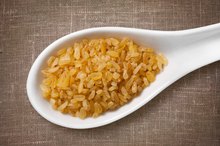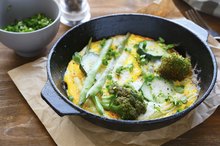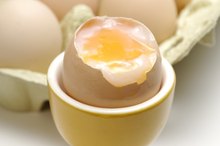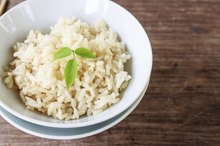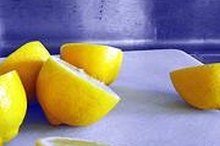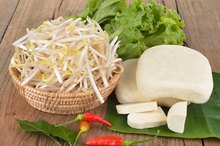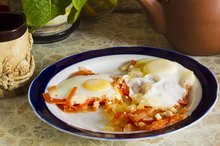Stevia & the Candida Diet
Candida albicans is a type of yeast that naturally exists in the human digestive tract. A sudden spike in candida populations can trigger a condition called candidiasis. A natural remedy for candidiasis is to adopt an anti-candida diet to restore balance to the gut flora 1. Sugar alternatives such as stevia are an important part of this diet plan.
Purpose
The yeast causing candidiasis symptoms survive by consuming sugars found in the digestive tract. Avoiding sugar consumption removes this food source and starves candida yeast. After the candida population returns to normal levels, candidiasis symptoms diminish 1. The central guideline of an anti-candida diet is to avoid foods that cause spikes in sugar levels 1.
- The yeast causing candidiasis symptoms survive by consuming sugars found in the digestive tract.
- Avoiding sugar consumption removes this food source and starves candida yeast.
Time Frame
Can You Eat Bulgur While on a Candida Diet?
Learn More
An anti-candida diet consists of three major phases. The first phase is designed to cleanse your digestive system. Avoid all processed foods, sugary products, fruits, beans and high-carbohydrate vegetables for three weeks. In the second phase, dieters begin reintroducing banned foods into their meals. This phase takes four weeks and includes a course of antifungal treatment. The third phase is a long-term maintenance plan in which dieters repopulate the gut with healthy bacteria. Eat yogurt containing active cultures to restore balance to your gut flora.
- An anti-candida diet consists of three major phases.
- The third phase is a long-term maintenance plan in which dieters repopulate the gut with healthy bacteria.
Meal Planning
Eat plenty of these vegetables to maintain your nutrient levels. Add moderate portions of lean protein by eating chicken, pork, lean beef or nuts. Whole grain products such as whole-wheat pasta, brown rice, quinoa or buckwheat provide your body with energy without stimulating candida growth.
Stevia Sweetener
Torula Yeast Allergy
Learn More
Stevia is a natural sweetener made from the leaves of the Stevia rebaudiana plant. According to Candida Cure Recipes, stevia is 300 to 400 times sweeter than table sugar 3. Unlike table sugar, honey, maple syrup or agave nectar, stevia is not a sugar compound upon which candida yeast feed. On an anti-candida diet, stevia is an acceptable sweetener that will not exacerbate symptoms of candidiasis 3. Use dried, ground stevia leaf or liquid stevia extracts to sweeten food. Dried, whole stevia leaves can be used in place of table sugar to sweeten tea or coffee.
- Stevia is a natural sweetener made from the leaves of the Stevia rebaudiana plant.
- According to Candida Cure Recipes, stevia is 300 to 400 times sweeter than table sugar 3.
Warning
Candidiasis is not a diagnosis accepted by the mainstream medical community. Following an anti-candida diet decreases your consumption of processed, unhealthy foods 1. This may improve gastrointestinal symptoms because meals are more nutritious overall, not because of candida starvation. Talk to your doctor before beginning an anti-candida diet plan 1. Fatigue, gastrointestinal distress and other symptoms may be due to a serious medical condition.
Related Articles
References
- The Candida Diet: Foods to Avoid
- Yeast Infection Advisor: The Recommended Candida Diet or Yeast Infection Diet
- Candida Cure Recipes: What Is Stevia Sweetener?
- Yapar Nur. Epidemiology and risk factors for invasive candidiasis. Ther Clin Risk Mgmt. 2014;10(2014):95-105. doi:10.2147/tcrm.s40160
- Buggio L, Somigliana E, Borghi A, Vercellini P. Probiotics and vaginal microecology: fact or fancy? BMC Womens Health. 2019 Jan;19:25. doi:10.1186/s12905-019-0723-4
- Gunther LSA, Martins HPR, Pimenta de Abreu AL, et al. Prevalence of Candida albicans and non-albicans isolates from vaginal secretions: comparative evaluation of colonization, vaginal candidiasis and recurrent vaginal candidiasis in diabetic and non-diabetic women. Sao Paulo Med. J. 2014;132(2):116-20. doi:10.1590/1516-3180.2014.1322640
- Xie HY, Feng D, Wei DM, Mei L, Chen H, Wang X, Fang F. Probiotics for vulvovaginal candidiasis in non-pregnant women. Cochrane Database Syst Rev. 2017;23;11(11):CD010496. doi:10.1002/14651858.CD010496.pub2
- Niewenhuizen WF, Pieters RHH, Knippels LMJ. Is Candida albicans a trigger in the onset of coeliac disease? Lancet. 2003;361(9375):2152-4. doi:10.1016/S0140-6736(03)13695-1
- Pérez-Torrado R, Querol A. Opportunistic strains of Saccharomyces cerevisiae: A potential risk sold in food products. Frontiers Microbiol. 2016;6:8. doi:10.3389/fmicb.2015.01522
- Wilson D. A tale of two yeasts: Saccharomyces cerevisiae as a therapeutic against candidiasis. Virulence. 2017;8(1):15-7. doi:10.1080/21505594.2016.1230580
- Office of Disease Prevention and Health Promotion. (2015) Appendix 7. Nutritional Goals for Age-Sex Groups Based on Dietary Reference Intakes and Dietary Guidelines Recommendations. 2015-2020 Dietary Guidelines for Americans. Washington, D.C.: U.S. Department of Health and Human Services.
- Kim J, Sudbery P. Candida albicans, a major human fungal pathogen. J Microbiol. 2011;49(2):171-7. doi:10.1007/s12275-011-1064-7
- Martinez RCR, Franceschini SA, Patta MC, et al. Improved treatment of vulvovaginal candidiasis with fluconazole plus probiotic Lactobacillus rhamnosus GR-1 and Lactobacillus reuteri RC-14. Letters Applied Microbiol. 2009;48(3):269-74. doi:10.1111/j.1472-765x.2008.02477.x
Writer Bio
Aurora Harklute has been writing since 2009. She works with people with depression and other mental illnesses and specializes in physical and mental health issues in aging. Harklute holds a Bachelor of Science in psychology and physiology from Marquette University and a Master of Arts in cognitive psychology from the University of Chicago.
